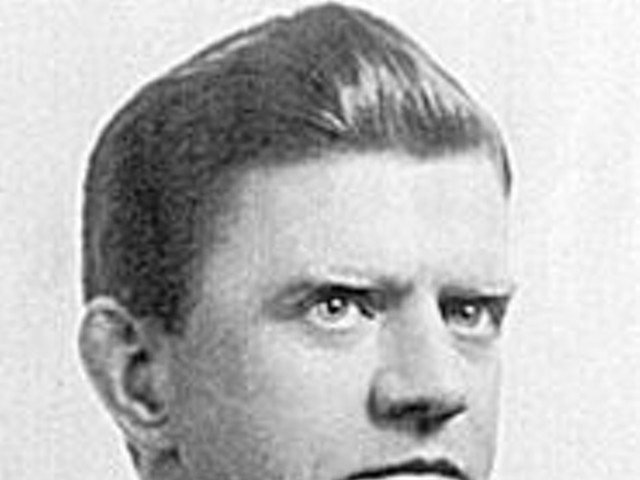Edna is cut from the same iconoclastic cloth as Ibsen's Hedda Gabler and the unconventional Ellen Olenska in Edith Wharton's Age of Innocence. So it was the darnedest thing, and certainly unexpected, that throughout the much-anticipated Washington University stage adaptation of The Awakening (which continues its run this week at the Missouri History Museum), I was reminded not of Hedda or Ellen -- but rather of Scarlett O'Hara.
Mostly I was contemplating how challenging it must be to try to adapt a dense novel to the stage or screen. The film version of Gone With the Wind, despite its success, is a pale shadow of Margaret Mitchell's epic saga. Why pale? Because in an attempt to include as much storyline as possible, scene after movie scene is cluttered with unwieldy (not to mention undramatic) exposition.
No adaptation can be literally faithful to its source material, nor should it try to be. But it must be true to the intent of the story. The Awakening strives mightily to capture the essence of Chopin's introspective and cerebral heroine. The beckoning tides of the Gulf of Mexico, which are integral to the novel's plot and metaphor, here are given abstract life through five spectral dancers positioned behind a scrim. The tide-dancers sway ever so invitingly to the intriguing choreography of Christine Knoblauch-O'Neal.
The brutal miracle of childbirth (eerily evoked by lighting designer Bret Myers), a silent seduction, a minimalist scenic design by Christopher Pickart that never allows a viewer to forget the beach, sea or sky -- all these elements serve to open up The Awakening. But they're all visual. It's when the actors begin to speak that the adaptation slows down. For here, as in Gone With the Wind, there's a sense that the script is trying to inject too much exposition. And yet, even with too much story being told, if you've not already read the novel there's a good chance you might be confused by the time jumps and locale changes.
An apparent attempt by adapter Henry I. Schvey to instill a sense of period speech results in too many lines ending in unnecessary, pace-dragging phrases: "That's why I'm here, you know." The constant inclusion of cues like "you know" stunts the evening's forward movement the same way that an oar dragging in the water slows a boat. The appellation "my dear" is uttered so often, were Schvey to cut that simple phrase from his script he'd probably trim the production's running time by minutes.
Of even greater concern, too many of the novel's characters have been watered down. On the page, Edna's husband Leonce is distracted and foolish. Here he's merely boorish, which is not the same thing at all. Whereas in the novel Edna's first suitor is a naive swain, here he's a dunce. While it's true that both male roles are inadequately acted, it's equally true that there's little subtext for an actor to act. Screenwriter-playwright William Goldman once advised fledgling writers, "If all that's going on in your scenes is what's going on in your scenes, think about it a long time." These scenes require further thought.
Yet in the midst of a production whose admirable ambitions outreach its execution, Schvey and director Annamaria Pileggi are wonderfully served by Cory Coleman's brave, intelligent portrayal of Edna. From the opening moment, when she appears on the beach and fatalistically doffs her hat (as if saying farewell to the world), Coleman dominates the evening. In the novel Chopin describes a time when Edna's thoughts "had gone ahead of her and she was striving to overtake them." Coleman's ethereal, disembodied line delivery is in harmony with that concept. She seems to revel in Edna's enigma. Is Edna pursuing her inner self, or is she merely flouting society's dictums? Coleman's hypnotic performance suggests that she doesn't quite know, but there is a heroism in her ambivalence.
All night long, Coleman manages to personify elusiveness. Then in the final scene, as she stands alone on the beach and courageously prepares to expose herself to her fate, voices from her past begin to be heard. Once again we've returned to the literal, on-the-mark world of Gone With the Wind. One almost expects to hear the declamations about "the red earth of Tara" that so inspired Vivien Leigh when this same ploy was used onscreen. Here, in a seashell, is the problem with this stage adaptation: A story, a character and an actress who all long to soar must instead remain earthbound.





